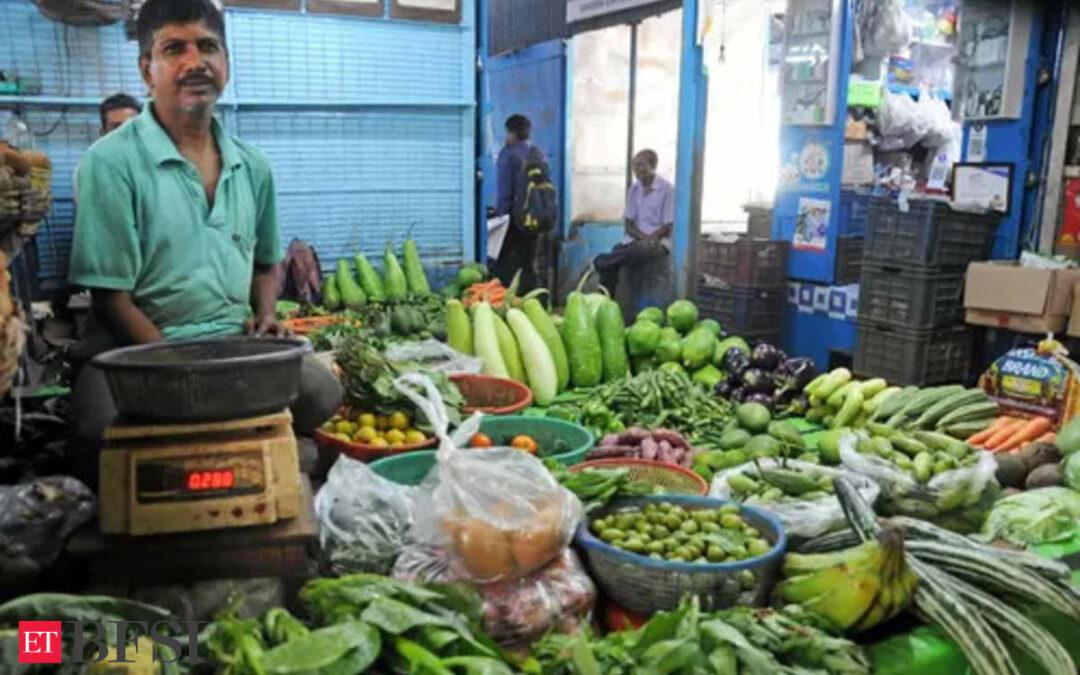India’s inflation eased further to an 11-month low of 4.83% in April compared with 4.85% in the previous month, as food inflation inched higher owing to high vegetable and pulses inflation.
“Although food inflation is marginally higher at 8.7%, the downward pressure emanates from petroleum-related commodity groups, namely, fuel and light and transport and communication services,” said DK Srivastava, Chief Policy Advisor, EY India.
The high inflation has dented the chances of a policy stance change from the Reserve Bank of India in its upcoming meeting next month, according to experts.
“With continued uncertainty, especially on the risks to the food inflation trajectory after Q2 FY2025, the chance of a stance change in the upcoming June 2024 monetary policy review appears rather dim,” said Aditi Nayar, chief economist at Icra.
Experts indicate that food inflation will likely remain high, pushing the overall inflation print above 5% in May, given the heat effect.
“The heat wave effect was just about been seen in vegetable inflation at 28% and will get exacerbated in May too,” said Madan Sabnavis, chief economist, Bank of Baroda.
Food inflation increased to 8.7% in April compared with 8.5% in the previous month.
The Reserve Bank of India will likely hold the policy rate at 6.5% for the eighth consecutive time at its meeting next month.
Food concerns
Sequentially, prices increased 0.5%, as vegetable prices increased 1.3% from March and fruit prices were up 6.2%.
Vegetable inflation remained in double digits for the sixth consecutive month at 27.8% in April, whereas pulse inflation was in double digits for an eleventh consecutive month at 16.8%.
Fruits inflation climbed to a three-month high of 5.2%.
Fuel and light index went further into deflation in April at -4.2% compared with -3.4% in the previous month. In contrast, inflation in miscellaneous items rose slightly to 3.54% as personal care and effects inflation rose to 7.4% compared with 6% in the previous month.
Core inflation, meanwhile, declined further to 3.2% compared with 3.3% in the previous month.
“Core inflation, which has been under control so far, can spring an upward surprise as companies have raised prices of their products. This holds in the consumer goods segment as they have held back price increases for over a year,” Sabnavis said.
Looking to the skies
While a favourable base is expected to push inflation levels lower in July and August, economists contend that much will depend on the monsoon.
“A timely onset and well distribution of monsoon season would be crucial to support agriculture output in 2024-25 and help control food inflation,” said Nayar, projecting 2-4%inflation in July and August.
Inflation was highest in Odisha at 7.1%, followed by Assam and Chhattisgarh at 5.7%, respectively. Thirteen of 22 major states had a higher rate of inflation than the national average, 12 of which experienced over 5% inflation in April.
Odisha, along with Andhra Pradesh, is also holding legislative assembly elections simultaneously with the general elections. Andhra Pradesh had an inflation rate of 5.6% in April.










